- Joined
- Apr 3, 2004
- Messages
- 33,852
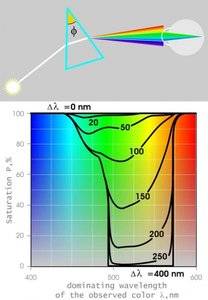
The wavy lines indicated the width of spectrum band you can see. When you can see only 20nm, then all colors are saturated – you can see each one distinctly. As the width that you can see increases to 150 nm, the saturation of red and blue is still 100% (but faint) - and you will see them distinctly at their respective ends of the spectrum, but green is reduced to 40% if you see only 150nm wide in the middle of the spectrum. When the width you see reaches 200nm (half of the visible spectrum), then none of the green is visible.
As gems are usually viewed in good illumination conditions and from convenient distances, the pupil diameter can be assumed 3mm and the distance to the gem being 25cm, in which case the pupil angular size will be 0.7°. In this case, to see only a wavelength interval of 50nm (to see pure colors) requires angular dispersion from the gem of at least 14°/nm. Angular dispersion less than 3.5° leads to complete loss of green, and the other colors being seen rather rarely. It should be emphasized that fire improves with increasing distance between the gem and the observer, but diminishes at lower illumination, which makes the pupil expand.
The above is true only if the prism is illuminated with a single light wave, as generated by a point source or one at a distance much greater than its size; in other words, one of small angular size to the gem. For an expanded source of illumination, the rays emitted from its different points, thus entering the prism from different directions, would mix their colors on the retina, degrading the purity of color. Hence, good fire also requires illumination of the gem from a light source of small angular size, as well as small angular size of the observer’s eye pupil.
Since the angular size of the sun, a lamp(?), or a candle does not exceed 0.5°, the fire depends primarily on the pupil angular size. The fire of colorless gems is perfect in sunlight and even better in illumination coming from multiple point sources ... then there will be as many color fans from the gem as there are light sources. The fire from a faceted gem will be completely lost in the light of a dull day under a cloudy sky.
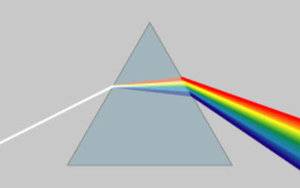
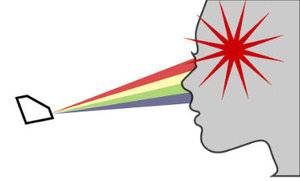
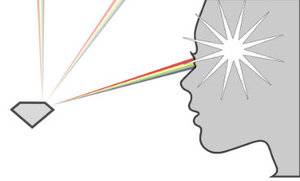
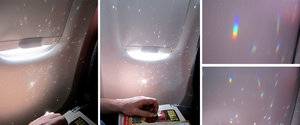
wow, you created your own rainbow there!Woo hoo me too
I like the purple!
Also digital cameras do a very poor job of photographing green turning it blue, even with having more green sensors in an attempt to match the human eye.
Take a photo of grass on a bright day than laugh at how badly it displays the green color in the photo.
It is maddening when you see a landscape with stunning greens and take a photo and it looks total blah even with a high end camera.
Same with taking a photo of green fire and it comes out bluish.